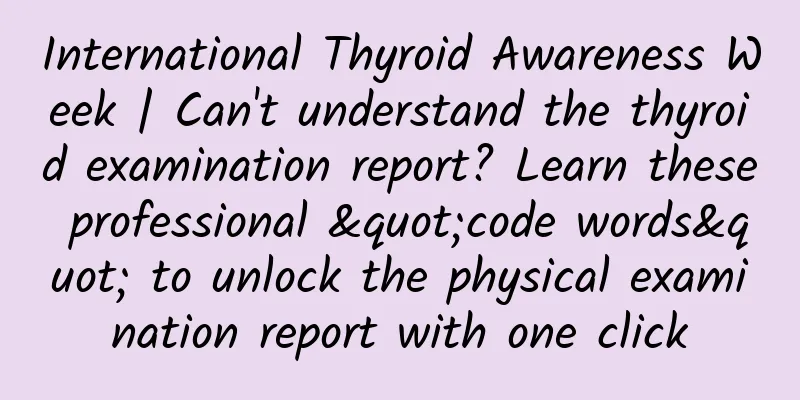Being deprived of physical strength, mental strength and even breathing, all because of this "traditional delicacy"

|
"...Okay, smile, smile at Pava, smile at the bat, eat the bat." Berg, who was filled with joy, and the others, who were in mixed feelings, devoured this strange breakfast. The meat was as black as charcoal and was hidden between the bones. In addition to using a fork, you had to use your hands to pick the meat out. Willard Price, The Adventures of Hal Roger Guam is a tourist destination located at the southernmost tip of the Mariana Islands in the Pacific Ocean. Under the beautiful beaches and coconut trees, there is a terrifying and bizarre mystery. The process of uncovering the mystery is comparable to a detective novel. Mysterious Diseases and Cycas Toxins The Chamorro people, the indigenous people of Guam, have been plagued by a neurodegenerative disease. This disease has symptoms of amyotrophic lateral sclerosis (ALS), Parkinson's syndrome and Alzheimer's disease. It has a long name, Guamanian amyotrophic lateral sclerosis parkinsonism dementia complex, or Guam-ALS-PDC for short. The patient's muscles atrophy and become weak, and he gradually loses his intelligence and memory. He is cruelly deprived of his physical and mental strength bit by bit, and finally dies from paralysis of his respiratory muscles. Amyotrophic lateral sclerosis (ALS), a neurodegenerative disease, has come into the public eye because of Hawking's illness | Pixabay Its incidence rate reached a peak in the 1940s, which was 50 to 100 times that of the average American (Guam is a U.S. territory). After the 1940s, the incidence rate of this terrible disease has been declining, and Chamorros born after the 1960s rarely get sick. The cause of Guam-ALS-PDC is unclear. Although it runs in families, no genetic inheritance has been found. The factor most closely related to it is the eating habits of the Chamorro people. Scientists first suspected that the traditional food of the Chamorro people is also a well-known poisonous plant: Cycas spp. Seeds of Cycas revoluta | Kylelovesyou / Wikimedia Commons The species of cycads on Guam are Micronesian cycads (C. micronesica) and South China cycads (C.rumphii). The Chamorro people made flour from starch-rich cycad seeds, which contain a non-protein amino acid β-methylamino L-alanine, referred to as BMAA. Experiments have shown that it will slowly poison the nerves of animals. Disappointingly, this clue was quickly cut off. Because cycad seeds contain some acute toxins, the Chamorro people will carefully process and remove the toxins, and at the same time remove most of the BMAA. The BMAA in cycad seed powder is far from enough to poison human nerves. Terrible deliciousness In 2002, ethnobotanist Paul Coxs and neuroscientist Oliver Sacks published a paper that focused their attention on a strange food ingredient: flying foxes. Flying foxes are large fruit-eating bats with fox-like faces and large eyes, making them friendlier than smaller bats. Eating bats is strange, but not uncommon around the world (in the children's novel The Adventures of Hal Roger, flying foxes are described as a horrible delicacy). The Chamorro people consider eating flying foxes part of their traditional culture, and they are an important dish at gatherings and festivals. The flying foxes are cut into pieces, stewed with grains, salt and other ingredients, and served with coconut milk before being served. Grey-headed flying fox (Pteropus poliocephalus), a flying fox endemic to Australia, looks strange but is not actually scary | Mnolf / Wikimedia Commons The traditional way to catch flying foxes is to set nets in the "paths" where they fly or on trees where they eat fruits, but the success rate is not high. But with the introduction of hunting rifles to Guam, the fate of the bats has changed. The United States has designated Guam as a military base, which has also increased the income of local people, giving them more spare money to buy their favorite wild flying foxes. Some people eat several a week. The large-scale killing of flying foxes has attracted the attention of the academic community since 1945. In 1973, the hunting of flying foxes was banned by law, but poaching continued. In 1974, the number of Mariana flying foxes (Pteropus mariannus) in Guam was less than 100, and in 1978, the Guam flying fox (P. tokudae) was declared extinct in Guam. In addition to poaching, meteorological disasters, forest reduction and invasive species brown tree snakes (Boiga irregulari) are also threatening the survival of flying foxes. Bats play an important role in spreading seeds and pollination, so their disappearance is a serious blow to the ecosystem. Grey-headed flying fox skimming over water | Andrew Mercer / Wikimedia Commons The bats in Guam could not meet people's needs, so Guam people began to purchase imported bats from Indonesia, Papua New Guinea, Fiji, the Philippines and other places. The import volume of flying foxes in Guam from 1975 to 1989 reached 220,000 (far exceeding the number of wild flying foxes in the entire Guam in the early 20th century). The answer is not complicated What is the connection between bats and Guam-ALS-PDC? The key to the answer lies in a familiar phenomenon: bioaccumulation. Animals need a lot of food to grow their flesh (for example, a large fish may have to eat ten kilograms of small fish to grow one kilogram of flesh, and a small fish may have to eat ten kilograms of water fleas to grow one kilogram of flesh), so a small amount of toxins in the food may accumulate in the animal's body. The higher the position on the ecological pyramid, the more toxins are accumulated in the animal's body, and the greater the risk of being poisoned. The flying foxes on Guam like to eat the seeds of the cycad tree, "sucking" off the juicy outer seed coat, and then spitting out the inner core wrapped by the hard inner seed coat. The answer suddenly became clear - the bats ate the toxins in the cycad seeds, and the Chamorro people ate the bats, thus ingesting a large amount of BMAA. Mariana flying fox feeding on seeds of Cycas revoluta. Photo by Merlin Tuttle | Paul Alan Cox & Oliver W. Sacks / MEDICAL HYPOTHESIS (2002) The BMAA in the cycad seeds comes from the symbiotic Nostoc algae (although it is called "algae", it is not a plant but a bacterium) in the roots of the cycad. Free-living Nostoc algae only contains 0.3 micrograms of BMAA per gram, while the outermost layer of the cycad seeds contains 1161 micrograms of BMAA per gram (the cycad may use toxins to protect its seeds). The Mariana flying fox specimen in the museum has a toxin content of up to 3556 micrograms per gram. The BMAA contained in a flying fox is equivalent to a ton of cycad seed powder. BMAA takes effect very slowly, and perhaps the bats’ lifespan is not long enough for it to damage their nervous systems, so there are no signs of poisoning in the bats. Also because of the slow onset, the traditional experience of the Chamorro people could have discovered the acute toxins of the cycad, but the dangers of bats were not revealed until modern science intervened. This is also a heavy lesson for many people. Human cognition is constantly moving forward. If we look at the world with traditional concepts, we may ignore many risks. Bioaccumulation of BMAA. From the Nostoc algae to the roots of the cycads that live with it, and then to the bodies of flying foxes, the concentration continues to rise | Paul Alan Cox et al. / Proceedings of the National Academy of Sciences (2003) It is worth noting that there is no information about neurodegenerative diseases in Guam's literature before the 20th century. Before the Chamorro people began to hunt flying foxes in large numbers, the toxic effects of BMAA may not have caused disease, or at least did not become a serious problem. As Guam's flying foxes became endangered, people turned to eating flying foxes imported from other countries. Foreign flying foxes did not eat a large amount of cycad seeds, so they would not be enriched with toxic BMAA, and Guam-ALS-PDC gradually disappeared. For the Chamorro people, Cooks' answer came too late. When the tragedy ended and the patient was buried for many years, people remembered the days of feasting on bats. Perhaps all the gifts given by fate had already been secretly marked with a price. |
>>: Do you know how dangerous it is for astronauts to go out of the spacecraft?
Recommend
First discovery in my country! Scientists discovered a meteorite crater with a diameter of 1,400 meters on a high mountain
Chinese scientists discovered a meteorite crater ...
Talk about the difference and inspiration between traffic and users
Recently there was a discussion topic about traff...
What language is used to develop WeChat mini programs? What languages are needed to create WeChat mini programs?
Q: What language is used to develop WeChat mini p...
Light Lesson - Comic Line Draft Introduction - Anime Drawing for Beginners
Qingwei Class - Introduction to Comic Line Draft ...
With a corset, I will have a “slim waist”?
The fairies are very open about their love for be...
Millions of IPs Create Science Popularization and Technological Talents Talk About Strengthening the Country丨A Different Journey to the Moon
Humans have conducted many explorations on the mo...
A Python introductory course that even novices can understand
Introduction to Python introductory course resour...
Pinduoduo's operation ideas for new stores
Now with the development of the Pinduoduo market ...
Fourth in the world! He led the team to conquer chlortetracycline and broke the US monopoly
In January 1956, the CPC Central Committee decide...
Zhang Xue's journey to becoming an excellent jazz dancer, a tutorial for beginners
Jazz dance, also known as American modern dance, ...
How much does it cost to develop a textile and leather mini program in Shangrao?
There is no doubt that the topic of mini programs...
What?! Is there a “strong AI” that can defeat GPT4?
The ChatGPT and GPT-4 large language models recen...
China's entire financial system: a comprehensive list of financial regulation, institutional operations and products
Comprehensively understand domestic financial sup...
These New Year gifts! Awesome!
During the Spring Festival A "cosmic-level&q...
3 key points for optimizing Google advertising!
The quality score of your ads plays a very import...









